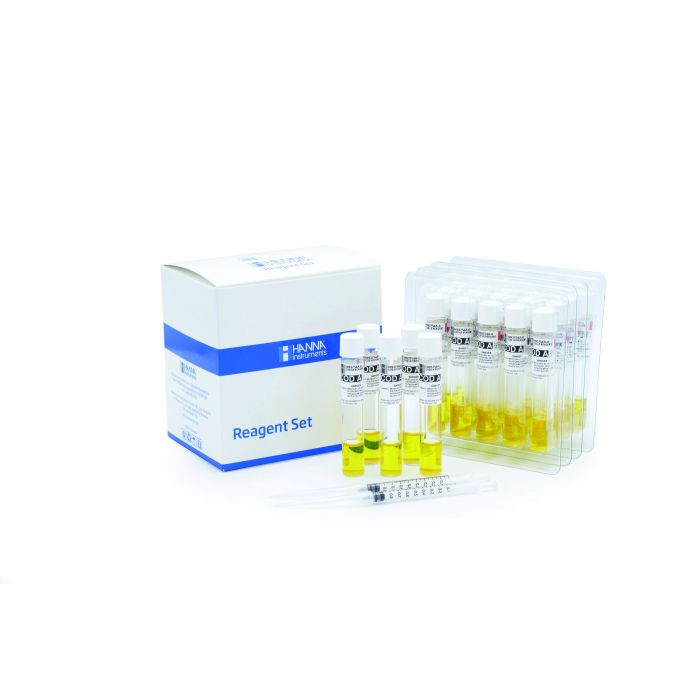COD Low Range Reagent Vials, EPA Method (25 tests) - HI93754A-25
- Pre-dosed reagents for ease of use
- Supplied with certificate of quality
- Marked with expiration date and lot number for traceability
Hanna vials contain approximately 3 mL of pre-dosed reagent so the user simply needs to add a small quantity of the sample. With pre-dosed vials, test preparation time is dramatically reduced and there is no time-consuming reagent preparation procedure or glassware cleaning. The vials and caps of the COD reagents have been designed to avoid accidental reagent spills. Due to the pre-dosed reagents, the amount of chemicals and handling time is also minimized.
Comparison of Methods
EPA- The EPA approved method 410.4 for COD determination requires the use of mercuric sulfate (HgSO4). Mercuric sulfate is present in the EPA reagent vials to mitigate the interference of chloride in the measurement sample. This is a common requirement for wastewater treatment plants and food manufacturing facilities which tend to have higher concentrations of chloride present in their effluent. When using reagents that follow the EPA method, it is important to treat used vials as hazardous waste, as mercury waste requires recycling.
Dichromate - The dichromate method is adapted from the standard EPA and ISO methods for determination of COD, which are approved to measure COD concentrations ranging up to 1500 mg/L O2. For samples with expected concentrations in the high range of 0 to 15000 mg/L O2, the dichromate reagents can be used for accurate COD determination. It is important to treat used vials as hazardous waste, as mercury waste requires recycling.
Mercury-free - For those who do not wish to handle mercury reagents, our “green,” mercury-free reagents are available for COD determination. These reagents are more sensitive to chloride interferences, as mercuric sulfate is not present. While the mercury-free reagents are easier to dispose of, they may be unacceptable for reporting purposes.
ISO- The ISO approved method 15705 for COD determination also requires the use of mercuric sulfate (HgSO4) to reduce the interference of chloride. Containing similar chemical reagents as the EPA method, it is important to treat used ISO vials as hazardous waste, as mercury waste requires recycling.
| Method | Parameter | Range (as O2) | Resolution | Accuracy | Reagent COD |
| EPA | COD LR | 0 to 150 mg/L | 1 mg/L | ±5 mg/L ±5% of reading | HI93754A-25 |
Dichromate | COD HR | 0 to 15000 mg/L | 10 mg/L | ±150 mg/L ±3% of reading | HI93754C-25 |
Mercury-free | COD LR | 0 to 150 mg/L | 1 mg/L | ±5 mg/L ±5% of reading | HI93754D-25 |
ISO | COD LR | 0 to 150 mg/L | 1 mg/L | ±5 mg/L ±5% of reading | HI93754F-25 |

